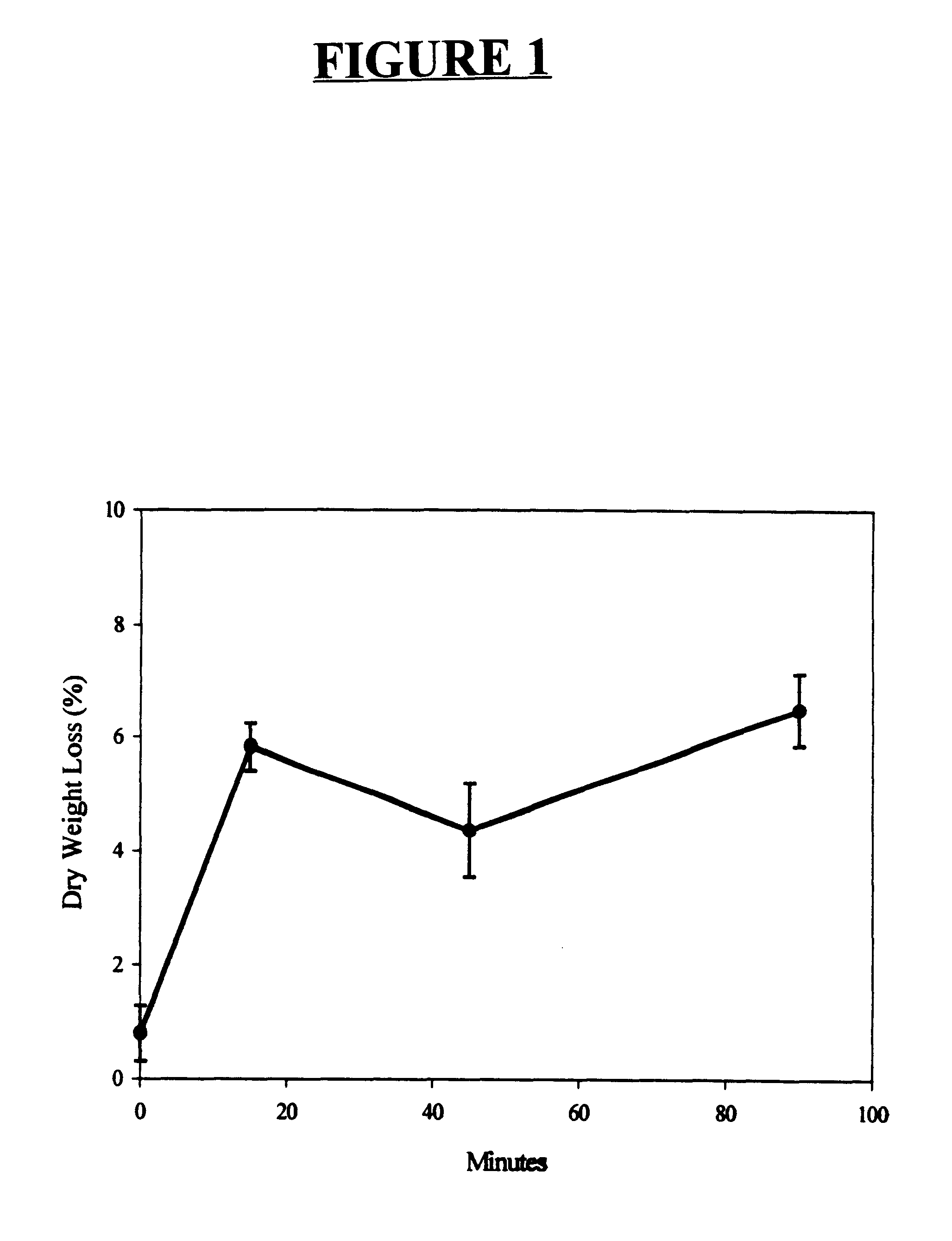Micro-particulate microbound diet for the culture of larval fish and crustaceans
a technology of microparticulate diet and culture system, which is applied in the field of microparticulate diet for the culture of larval fish and crustaceans, can solve the problems of limiting the availability and nutritional value of live food, the amount of labor required for the preparation of live feed, and the potential introduction of pathogens into the culture system
- Summary
- Abstract
- Description
- Claims
- Application Information
AI Technical Summary
Problems solved by technology
Method used
Image
Examples
Embodiment Construction
Culture System and Conditions
Larvae used for the following experiments were held in 2.2 L plastic containers suspended within aquaria. Each aquarium served as a self-contained reciriculating system with biofilter as described by Ohs et al. (1998). This type of system provided sufficient replication while adhering to a design that is characteristic of large-scale hatchery systems. The system was prepared 1-2 weeks prior to the beginning of the experiment to allow acclimation of the biofilter.
Larvae of Macrobrachium rosenbergii were cultured in 12 ppt brackish water at 28.degree. C. Half of the water in the aquarium where the containers were suspended was exchanged every three days (10-15 L / day). Each culture container had two mesh screens of approximately 15 cm.sup.2 each to allow for free water exchange with surrounding water. Water temperature and salinity were monitored daily. High-intensity, artificial light was provided from 0700 to 1700 h. Containers were cleaned daily to remov...
PUM
 Login to View More
Login to View More Abstract
Description
Claims
Application Information
 Login to View More
Login to View More - R&D
- Intellectual Property
- Life Sciences
- Materials
- Tech Scout
- Unparalleled Data Quality
- Higher Quality Content
- 60% Fewer Hallucinations
Browse by: Latest US Patents, China's latest patents, Technical Efficacy Thesaurus, Application Domain, Technology Topic, Popular Technical Reports.
© 2025 PatSnap. All rights reserved.Legal|Privacy policy|Modern Slavery Act Transparency Statement|Sitemap|About US| Contact US: help@patsnap.com


